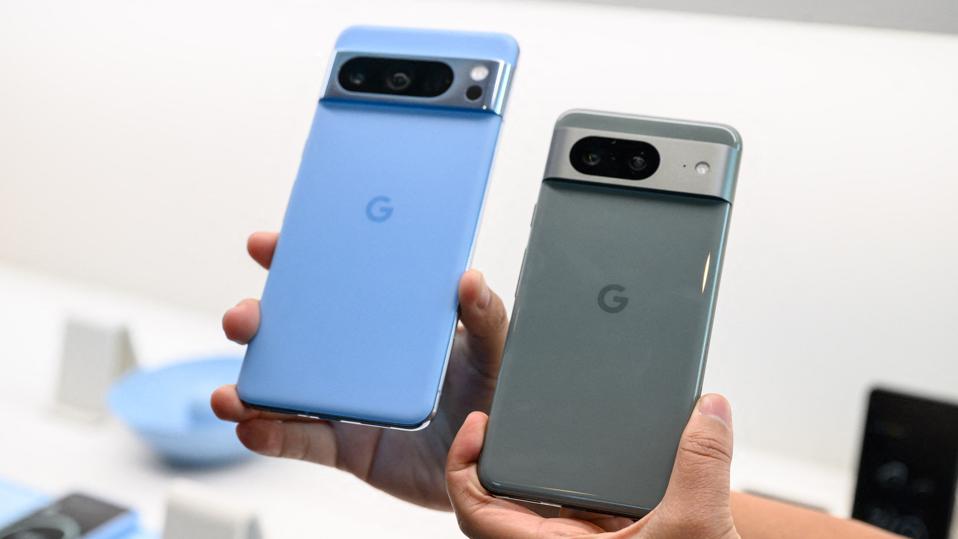Taking a look back at this week’s news and headlines across the Android world, including the mysterious Pixel 9 Pro XL, Galaxy S24 special offers, Samsung’s Chip Split for Z Fold 6, Vivo’s Snapdragon power, Honor Pad 9 review, choosing seven years of updates, and goodbye to Google Podcasts.
Android Circuit is here to remind you of a few of the many discussions around Android in the last seven days. You can also read my weekly digest of Apple news here on Forbes.
A Larger Pixel Leaks
We’ve had a good look at Gogole’s next flagship smartphones with details this week on the Pixel 9 family. It now looks like we’ll have three handsets to choose from, with a vanilla Pixel 9, the 9 Pro and a new Pixel 9 XL:
“[tipster Steve Hemmerstoffer] has now informed us that those devices were actually the Pixel 9 Pro and Pixel 9 Pro XL. Yes, Google will be launching an ‘XL’ version this year, bringing it back for the first time since the Pixel 5 series. With that in mind, we now bring you an exclusive first look at the vanilla Pixel 9.”
(91mobiles).
Samsung Trade-In Offers For Galaxy S24
Samsung continues to push sales of the Galaxy S24 handsets with a raft of special offers. This week both Samsung UK and Samsung US offered significant discounts if you traded in your older smartphones for the latest flagship:
“Samsung’s latest phones, the Galaxy S24, S24 Plus and S24 Ultra, are accomplished and effective handsets. If you have been put off buying one because of the price, things just got a little better. In the U.K. and the U.S., Samsung has promotions to trade in your old phone to get money off. Trade-ins are nothing new, but there’s something special about this.”
(Forbes).
Chip Split For Galaxy Z Flip 6 and Z Fold 6
Samsung’s push to match the aggressive pricing of the opposition’s foldable phones has led to an interesting decision to include its own Exynos 2400 chipset in the two devices—Qulacomm’s Snapdragon will still be the exclusive chipset in some territories:
“This is important because the Snapdragon and Exynos chipsets are not identical in performance. The community widely regards the Snapdragon platform as offering more power over Samsung’s homegrown rival. That small but measurable performance gap is present in head-to-head comparisons on the Galaxy S24 handsets, but the Exynos family is more power efficient and offers better battery life.”
(Forbes).
Vivo’s Snapdragon Power
Speaking of chips in foldable smartphones, Chinese manufacturer Vivo has upped the performance game with the first Snapdragon 8 Gen 3 equipped foldable. While it remains a Chinese-only handset for now, a global variant is expected later in 2024 for this impressively specced handset:
“The vivo X Fold 3 Pro earns its moniker by virtue of its premium specs. Expect a Snapdragon 8 Gen 3 chipset for the first time in a foldable, along with 16GB of RAM, and 512GB or 1TB of storage. We’ve also got a 5,700mAh battery aboard, which could be the biggest battery we’ve ever seen in a foldable phone. The company claims you’ll get two days of usage as a result of this battery. Need to top up? Then you can make use of 100W wired charging or 50W wireless top-ups.”
Honor Pad 9 Reviewed
Honor’s latest tablet is working hard to address some of the concerns of last year’s Honor Pad while focusing on the market’s preferences for a table – namely a large screen with light construction and minimal bezels… all at an affordable price. On first like, the Honor Pad 6 has achieved just that:
“The Honor Pad 9 is less than 7 millimeters thin and relatively light for a 12.1-inch tablet at just 555 grams. Although the Pad 9 is a mid-range device, the metal casing means there are hardly any compromises in terms of feel. The build quality is impressive, but there is no IP certification. The edges around the IPS panel are kept quite narrow, resulting in a pleasing screen-to-body ratio of just under 85%. Honor does not specify which protective glass has been installed.”
Why 7 Years Of Updates?
Google shook up the Android world when it announced it would offer seven years of software updates and security support for the Pixel 8 and Pixel 8 Pro handsets. A number of manufacturers have followed suit, yet there is one interesting question. Why seven? The answer is on the latest Made of
“So when we look at the trajectory of where the original Pixel that we launched in 2016 landed and how many people were still using the first Pixel, we saw that actually, there’s quite a good active user base until probably about the seven-year mark. So if we think about, okay, we want to be able to support Pixel for as long as people are using the device, then seven years is about that right number.”
(Made By Google podcast, via 9to5 Google)
And Finally…
Speaking of podcasts, many Android users will be saying goodbye to the Google Podcasts app on their smartphone as Google withdraws its dedicated podcasting client to push everyone to the sprawling YouTube Music app. The team at 9to5Google look back on the competent if never astounding app”:
“Fundamentally, Google created a simple podcasts app that was easy to use. Its proximity to Search and the open nature of RSS should have sustained the service for the long run. However, video podcasting naturally flourished on YouTube and the company decided to consolidate efforts.”
(9to5Google).
Android Circuit rounds up the news from the Android world every weekend here on Forbes. Don’t forget to follow me so you don’t miss any coverage in the future, and of course, read the sister column in Apple Loop! Last week’s Android Circuit can be found here, and if you have any news and links you’d like to see featured in Android Circuit, get in touch!

